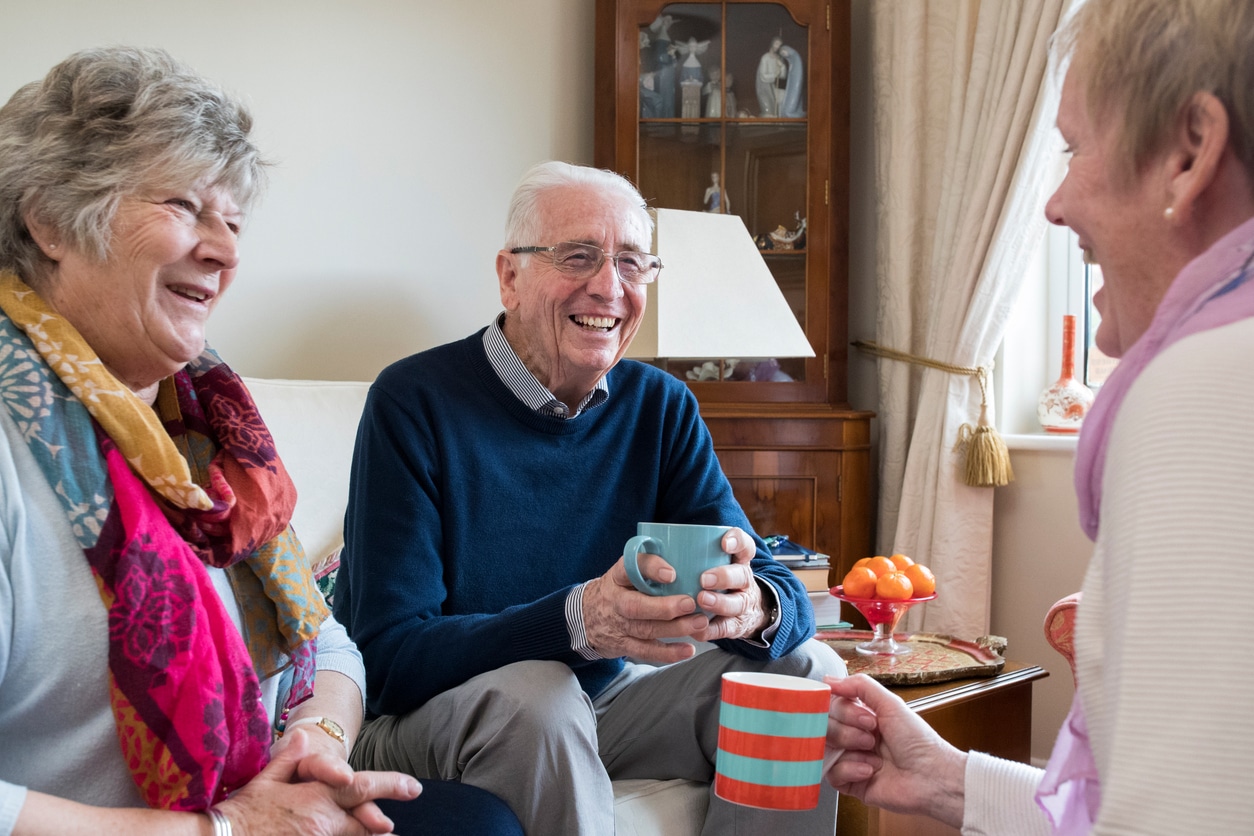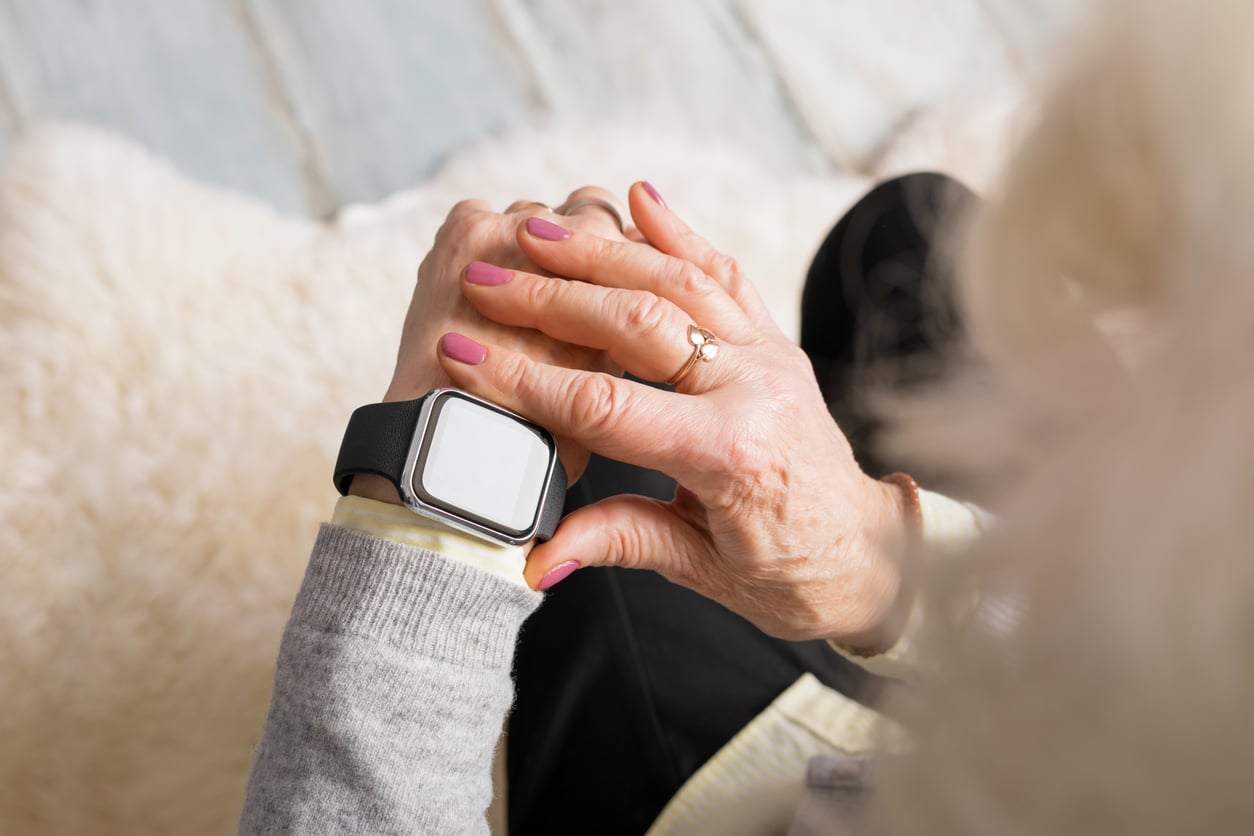Eating well and staying active is important at any age, and for adults over 60, even small improvements can have a big impact on quality of life and life expectancy.
A substantial body of research shows that consuming foods high in nutrients and following a consistent exercise plan improves our ability to retain mobility and functional independence; maintain a healthy weight; and reduce the likelihood of type 2 diabetes, heart disease, and even certain cancers. Older adults who enjoy a lot of fruits, vegetables, whole grains and fish experience better overall health and wellness, and those who exercise regularly are much more likely to maintain strength and mobility and preserve cognitive, affective and social function.
Yet data rarely moves us to make improvements. And other factors may keep us from a healthy lifestyle even when we want to live one.
Nutritional challenges
Some seniors have chronic illnesses that make it difficult, painful or exhausting to shop for and prepare food. Others may take medications that alter taste or decrease appetite. Many may have trouble paying for food or getting to a store that sells fresh, healthy food. And some of us experience all of these. Your healthcare provider can help you find resources that make it easier and more affordable to eat well. Learn more about avoiding poor nutrition.
Fitness challenges
Fear of falling is a common reason many of us avoid exercise. Ironically, strength, flexibility and balance are improved with activity – so staying sedentary at any age actually makes us less safe. Medical conditions can make it hard to keep our balance, and arthritis or diabetes can impact our ability to walk without pain. Similarly, some medications can make us dizzy or drowsy. Ask your healthcare provider to help you design an exercise plan that’s appropriate and safe for you.
Here are some ways to increase nutritional and physical fitness.
Healthy Aging & Eating
Redesign meals.
Learn about serving sizes at the U.S. Department of Agriculture’s ChooseMyPlate.gov, says Ruth Frechman, a registered dietitian in Burbank, California, and author of The Food Is My Friend Diet. “Half your plate should be filled with fruits and vegetables, a quarter should have a small portion of protein, and the last quarter a small portion of carbohydrates,” she says. Additionally, Lisa Moskovitz, a registered dietitian and CEO of NY Nutrition Group in New York City, recommends combining fiber and protein, which helps us feel full and can ward off constipation.
Read labels.
Checking product labels and reviewing nutritional information on menus is a smart practice that helps us learn what’s in the foods we eat, particularly:
Sodium
Most of us are completely unaware of how much sodium we consume because so much of it is hidden in what we buy, especially frozen, canned, processed, and restaurant food, Frechman notes. Since many older adults have high blood pressure, she recommends consuming no more than the American Heart Association’s ideal limit of 1,500 milligrams of sodium per day.
Fats
Reyna Franco, another registered dietitian in New York City, cautions seniors to reduce trans and saturated fats found in butter, bacon, steak and full-fat dairy products. Instead, boost monounsaturated and polyunsaturated fats, which can be found in salmon, avocado, nuts, flax seeds and olive oil. “Many studies have shown that these fats can help improve joint pain and arthritis. They also promote cardiovascular health, brain function and memory,” she notes.
Understand vitamins and minerals.
Age-related physical changes, such as loss of bone mass and slowed gastric acid production, can be associated with vitamin and mineral deficiencies that impact our wellness, including:
Calcium
The National Institutes of Health calcium intake recommendation is 1,200 milligrams daily for women over age 50, 1,000 milligrams daily for adult men until age 50, and 1,200 milligrams daily for men over age 70.” Sources of calcium include fat-free or 1% milk, yogurt and cheese; collard greens; black and pinto beans; and almonds.
Vitamin D
This vitamin is essential to our body’s ability to absorb calcium. It is synthesized by the skin upon exposure to sunlight. (But remember to always use proper skin protection in the sun!) Foods such as salmon, cheese and egg yolks are good sources, too. Ask your healthcare provider about how much Vitamin D you need and if a supplement is right for you.
Vitamin B
These vitamins are important for metabolism, heart health and healthy nerves. However, some medications may interfere with B vitamin metabolism. Ask your pharmacist about the medications you’re taking and if you should consider supplementing your diet with fortified foods or vitamins.
Exercise and Aging Well
“If you’re sitting all day, the body will adapt to that and at a certain point, you’ll drop below the level of functional independence,” says Kay Van Norman, an exercise and wellness specialist for older adults and president of consulting firm Brilliant Aging. “Seniors should understand that though it is common for people to lose function as they age, it is not necessarily normal and it shouldn’t be expected.”
Assess changes.
Accelerated loss of strength. Reduced joint mobility. Fatigue from small exertions, Shortness of breath. Normal aging, a medical condition, or a sedentary lifestyle can all have an effect on physical changes, and it’s important to know what the relationships are. Your healthcare provider can help you differentiate them.
Explore options.
There are many opportunities to safely boost fitness levels regardless of physical condition. Van Norman notes that even seniors who cannot walk without assistance can still engage in safe, guided group exercise like seated aerobics and yoga classes, or exercises specifically designed for limited mobility or balance.
Join in.
Robin Nelson, fitness coordinator at the North Austin YMCA in Texas, says that older adults can seek out active older adult programs that help seniors be more active and stay socially connected. “The really nice thing about coming to a community like the Y is that you meet new people, and that contributes to your social health as well,” Nelson says. “It’s a great way to break social isolation and stay motivated.”
Discuss your physical and nutritional wellness with your pharmacist and healthcare team to be an active participant in your own healthy aging.
Don’t disregard professional medical advice, or delay seeking it, because of what you read here. This information is not intended as a substitute for professional consultation, diagnosis or treatment; it is provided “as is” without any representations or warranties, express or implied. Always consult a healthcare provider if you have specific questions about any medical matter, and seek professional attention immediately if you think you or someone in your care may be suffering from a healthcare condition.




